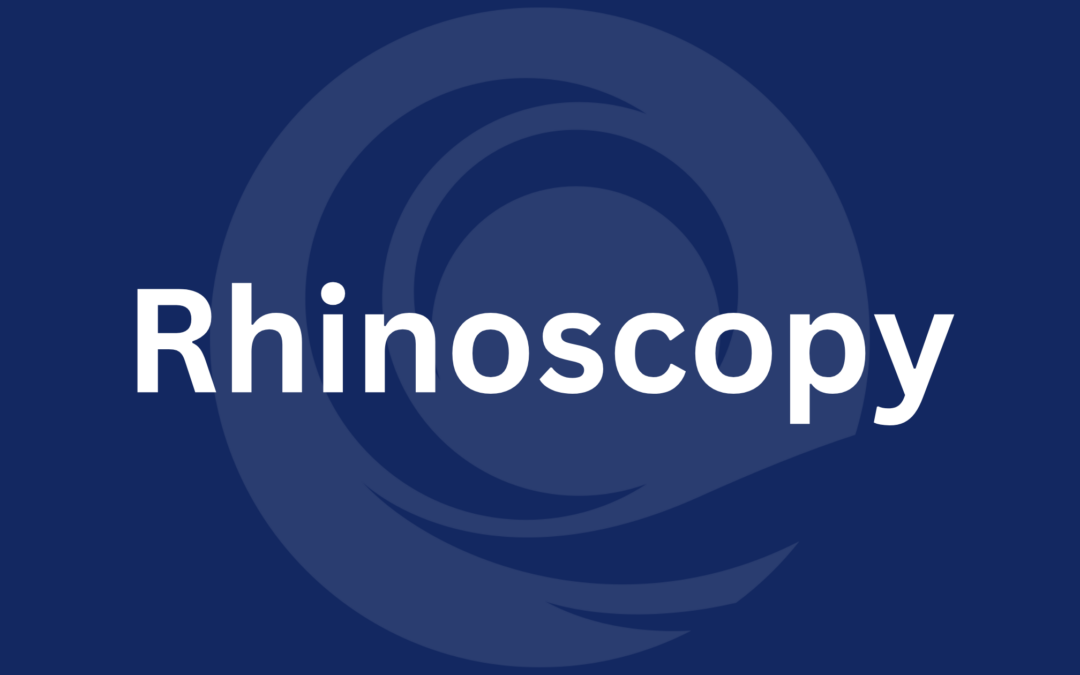What is Rhinoscopy?
Rhinoscopy is a minimally invasive diagnostic procedure that allows veterinarians to examine the inside of a pet’s nasal passages using a small camera called a rhinoscope. This technique is invaluable in diagnosing the cause of chronic nasal discharge, sneezing, bleeding, or breathing difficulties in dogs and cats.
A Brief History of Rhinoscopy in Veterinary Medicine
While nasal endoscopy has been used in human medicine for decades, its adaptation in veterinary medicine is more recent.
🔬 Early Techniques (Pre-1980s): Veterinarians relied mainly on X-rays and surgical exploration to diagnose nasal diseases in animals. This often led to invasive procedures with longer recovery times.
📈 The Rise of Endoscopy (1980s-1990s): As human endoscopy technology advanced, its application in veterinary medicine expanded. Rhinoscopes became more accessible, allowing vets to visualize the nasal passages in real time for the first time.
💡 Modern Rhinoscopy (2000s-Present): With the development of high-definition cameras, fiber optics, and flexible endoscopes, rhinoscopy has become the gold standard for diagnosing nasal conditions in pets. It is now a routine, minimally invasive procedure that helps detect and treat nasal diseases without the need for surgery.
When is Rhinoscopy Recommended?
If a pet exhibits any of the following symptoms, a vet may recommend rhinoscopy:
✔️ Chronic sneezing or nasal discharge (clear, pus-like, or bloody)
✔️ Reverse sneezing episodes or snorting sounds
✔️ Nasal congestion or difficulty breathing through the nose
✔️ Nosebleeds (epistaxis)
✔️ Facial swelling or deformities around the nasal area
✔️ Sudden onset of noisy breathing or snoring
These symptoms can indicate anything from infections to more serious conditions like nasal tumors.
What Can a Rhinoscopy Detect?
Rhinoscopy provides direct visualization of the nasal cavity, allowing for a highly accurate diagnosis of various conditions, including:
🦠 Infections: Bacterial, fungal, or viral infections that may cause chronic inflammation. Aspergillosis, a fungal infection, is a common culprit in dogs.
🌱 Foreign Bodies: Grass seeds, foxtails, or small objects that may have become lodged inside the nasal passages.
🩸 Nasal Tumors or Polyps: Growths within the nasal cavity can cause chronic symptoms and require biopsy for diagnosis.
🔥 Chronic Rhinitis or Inflammatory Conditions: Long-term irritation and inflammation of the nasal lining, often linked to allergies or autoimmune diseases.
🔎 Congenital or Structural Abnormalities: Some breeds, especially brachycephalic (flat-faced) breeds, may have nasal abnormalities affecting airflow.
How is the Procedure Performed?
Rhinoscopy is conducted under general anaesthesia to ensure the pet remains still and comfortable throughout the procedure. The general steps include:
1️⃣ Pre-procedure Imaging: Before inserting the rhinoscope, a vet may perform X-rays or a CT scan to assess structural abnormalities.
2️⃣ Rhinoscope Insertion: A small, flexible or rigid camera is gently inserted into the nasal cavity.
3️⃣ Examination and Sampling: The vet closely inspects the nasal passage for abnormalities. If necessary, biopsies or fluid samples are taken for further testing.
4️⃣ Foreign Body Removal or Treatment: If a foreign object is found, it may be removed immediately using specialized tools. Some minor abnormalities, like small growths, may also be treated endoscopically.
The entire procedure typically lasts 30–60 minutes, depending on the complexity of the case.
What are the Benefits of Rhinoscopy?
✔️ Minimally Invasive: No surgical incisions are required.
✔️ Accurate Diagnosis: Direct visualization allows for a more definitive diagnosis.
✔️ Tissue Sampling: Biopsies can be taken without major surgery.
✔️ Targeted Treatment: Some conditions can be treated immediately, such as foreign body removal.
Are There Any Risks?
While rhinoscopy is generally safe, mild risks include:
⚠️ Temporary nosebleeds due to minor irritation of the nasal lining.
⚠️ Anesthesia risks, though minimal with proper patient monitoring.
⚠️ Mild nasal congestion post-procedure, usually resolving within 24–48 hours.
What are the Alternatives?
If rhinoscopy is not an option, alternatives include:
📌 X-rays or CT scans – Useful for structural assessment but do not allow direct visualization.
📌 Nasal flushes – Can help remove blockages but do not provide diagnostic precision.
📌 Exploratory surgery – More invasive and typically only used if biopsy results are inconclusive.
Final Thoughts
Rhinoscopy has revolutionized how veterinarians diagnose and treat nasal diseases in pets. With its rich history in veterinary medicine, continued technological advancements make this procedure more precise, less invasive, and highly effective in improving the quality of life for pets with nasal conditions.
Would you like to learn more about other endoscopic procedures and how they are changing veterinary care? Stay tuned for our next blog on bronchoscopy vs. tracheoscopy!

